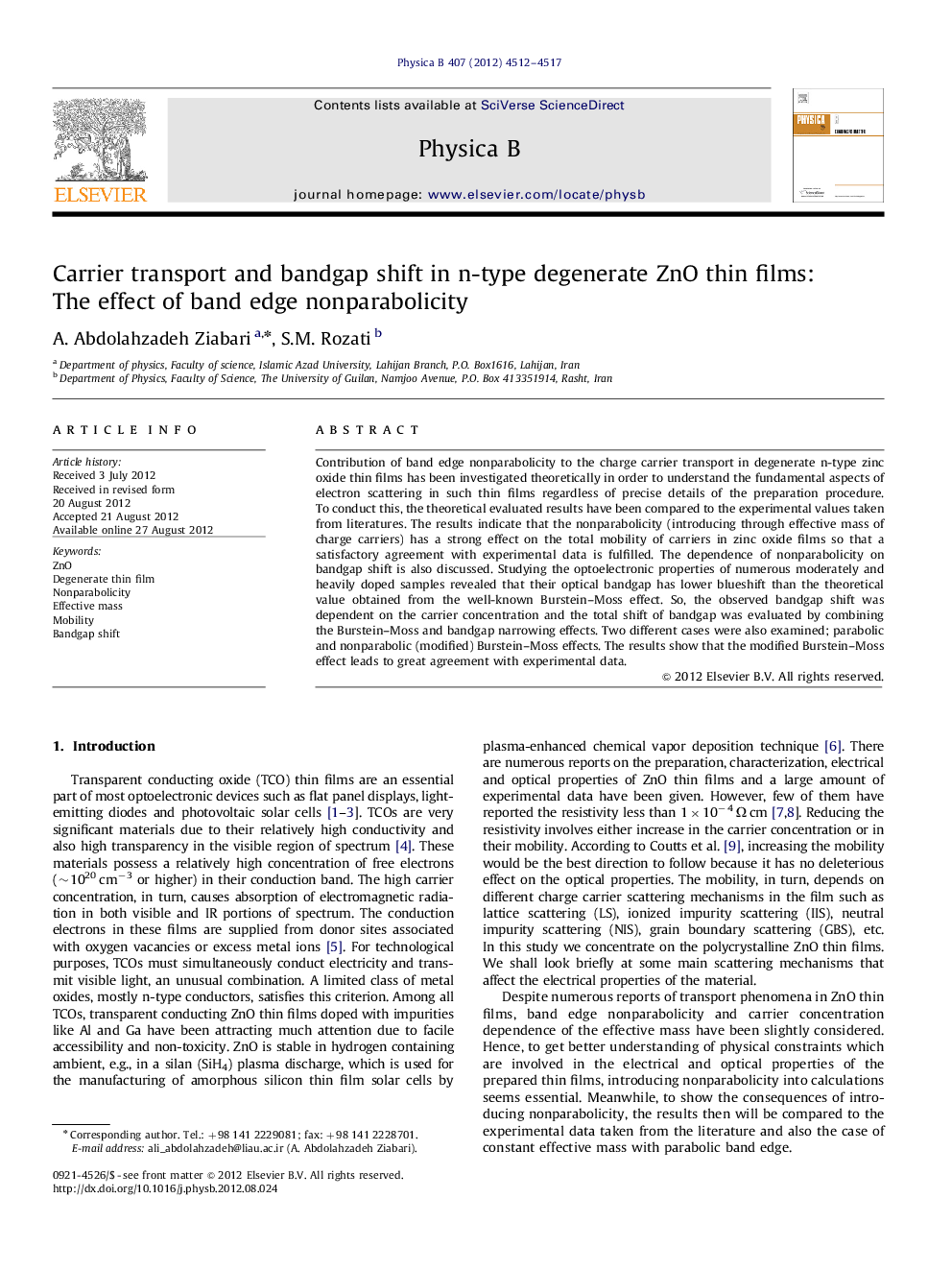| Article ID | Journal | Published Year | Pages | File Type |
|---|---|---|---|---|
| 1810377 | Physica B: Condensed Matter | 2012 | 6 Pages |
Contribution of band edge nonparabolicity to the charge carrier transport in degenerate n-type zinc oxide thin films has been investigated theoretically in order to understand the fundamental aspects of electron scattering in such thin films regardless of precise details of the preparation procedure. To conduct this, the theoretical evaluated results have been compared to the experimental values taken from literatures. The results indicate that the nonparabolicity (introducing through effective mass of charge carriers) has a strong effect on the total mobility of carriers in zinc oxide films so that a satisfactory agreement with experimental data is fulfilled. The dependence of nonparabolicity on bandgap shift is also discussed. Studying the optoelectronic properties of numerous moderately and heavily doped samples revealed that their optical bandgap has lower blueshift than the theoretical value obtained from the well-known Burstein–Moss effect. So, the observed bandgap shift was dependent on the carrier concentration and the total shift of bandgap was evaluated by combining the Burstein–Moss and bandgap narrowing effects. Two different cases were also examined; parabolic and nonparabolic (modified) Burstein–Moss effects. The results show that the modified Burstein–Moss effect leads to great agreement with experimental data.
